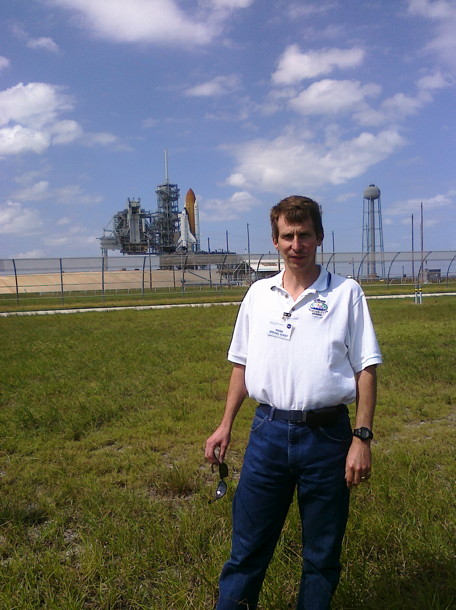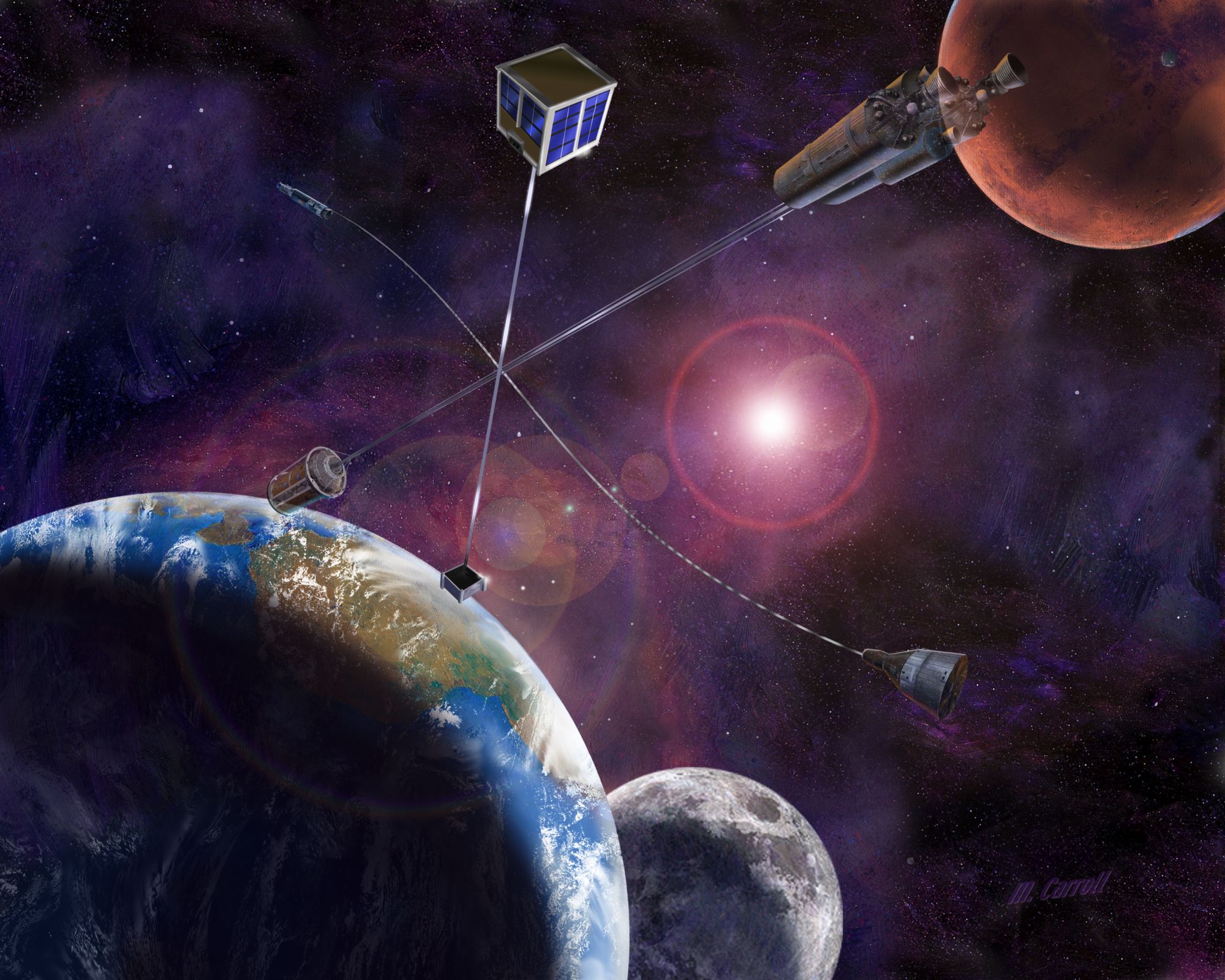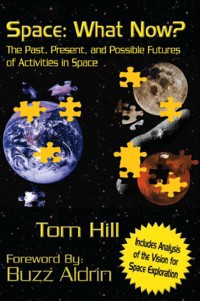|
|
 |
|
Here's the latest on space, and my opinions on it... This is the legacy site, with blog
entries from November, 2004 through June, 2011. Updates after June 9, 2011 can be found at http://spacewhatnow.com/SWN
|
 |
|
|
Friday, August 31, 2007
This Ought to be Good
Employees of the Jet Propulsion Lab (JPL) are taking Cal Tech, NASA, and the Commerce Department to court over new identification requirements. I typically don't pay too much attention to such things, but this is the first time I remember seeing the 14th Amendment mentioned as the source for the (derived, because the word isn't mentioned in the amendment itself) right to privacy.
Since I'll be required to do the same thing, I guess this case has the potential to have an impact on me, so I should care
more. I've worked in or near the government all my professional life, and this kind of thing (the new badging requirements)
just seems par for the course to me. I guess I see how a bunch of people could really get fired up about it at a meeting,
but considering that other agencies will be required to do it as well (including the Commerce Department), the whole thing
strikes me as a bit quixotic.
Thursday, August 30, 2007
Voyager Tidbits. Murphy is Alive and well
The Voyager missions just celebrated their 30th anniversary (birthday? Nah). I listened in on a briefing about them, and
picked up a few interesting facts: - Voyager 1 and 2 do not save data on board, they can only broadcast live. They are
monitored, on average, for 8-10 hours EACH DAY by Deep Space Network antennas.
- Voyager 2 is in the southern sky, and can
only be monitored by the DSN antenna in Canberra, Australia.
- (Murphy) The day Voyager 1 passed the solar wind termination shock, we weren't listening, so we missed the data on it.
- It's estimated that the termination shock is 5-6,000 miles thick.
- The
Voyagers can't add any data to the study of the Pioneer effect, a potentially new part of gravity (or a spacecraft issue) discovered by the Pioneer spacecraft. Voyager spacecraft have
to fire thrusters to maintain their attitude, which perterbs their motion much more than the Pioneer effect would, if it is
universal.
- The Voyager spacecraft burn 7 grams of propellant per week, and one of them has 28kg of propellant remaining.
Propellant is not a life-limiting issue.
- One propellant-saving maneuver was made by firing thrusters during the Jupiter
close approach, adding more kinetic energy to the spacecraft than if the maneuver was done in open space.
- Power curves
show them being able to broadcast until 2025.
Soldier on, Mars Society!
My primary space advocacy organization, the Mars Society starts their tenth conference (they still call it a convention, bless 'em) today. I usually attend, but business travel looked to have me tied up, and
I had another project I was woking on. Looks like a good agenda, though I note fewer breakout sessions than in previous conferences. Being in LA makes it easy to get some heavy hitters
from JPL, SpaceX and big aerospace companies.
Here is a summary I wrote about a previous conference.
Sunday, August 26, 2007
Be Sure to use his Proper Title
If you happen to bump into Brian May of the rock band Queen, be sure to call him Dr. May. He just completed the work necessary to receive his doctorate in astrophysics. Something tells me his dissertation (Radial Velocities in the Zodiacal Dust Cloud) will not sell as well
as some of Queen's albums.
Anyone who's a Queen fan will likely enjoy reading the Wikipedia entry on the band (linked above)
The Sun Blocking Commands
I haven't been posting about it much, but the Cassini spacecraft continues to truck on doing some amazing things. In a recent upsate, the team mentions that they're going through a solar conjunction. That happens when the Earth, the sun and the spacecraft (essentially, the planet it's orbiting, but that's not always the
case) line up. As viewed from Earth, the spacecraft and the sun are at nearly the same place in the sky.
In most cases, this condition means that Earth can't reliably send commands to the spacecraft, and can't reliably receive
information from it (the report mentions telemtry received on the 21st of August. My thought is that there's some cut and
pasting going on in these reports). Most spacecraft can run fine on their own anyway (in fact, ground command mistakes are
a common cause for problems on board a spacecraft), so the big thing they had to do was tell the spacecraft that it wouldn't
be hearing from the ground for a while. To do this, they set a timer called the Command Loss Timer to 10 days. Normally,
this timer is set to 85 hours, or a little more than 3 days. During normal operations, they talk to the spacecraft more often
than that, and there's a little extra time in there in case of a ground problem.
I find it interesting that even solar conjunction leads to an opportunity to learn something. During conjunction, commands
will be sent to Cassini, probably at different broadcast power levels. They are not important commands to the spacecraft,
but after conjunction, downloading the data from the craft will show which commands got to it and were processed. That information
will help us learn about the solar corona
Friday, August 24, 2007
Quick Claim and Response
Looks like someone else has jumped on the "Viking probe found life on Mars" train. This article describes a paper saying that hydrogen peroxide based life could be the cause of the chemical signatures seen when Viking tested the soil. This is notable because it's the first paper I've heard about such a topic by someone other than Gil Levin, who was involved in one of the experiments on Viking (the labeled release, or LR experiment) and maintains that it found
(and killed) Martian life.
A few hours later, this article came out calling the claim 'bogus'.
Ah, the rapidity of news turnaournd today. I look forward to the day when knowledge of the current life (or lack of life)
on Mars is part of everyday knowledge.
Thursday, August 23, 2007
Humans v Robots, Part X+1
Catching part of the Endeavour landing, one of my office mates went on about how many robotic missions could have been
fully funded for the money spent on this one flight of the shuttle. I pointed out a couple things: - The complaint assumes
that, if shuttle missions were cancelled, all the funding would go immediately into robotic exploration. That rarely happens
- (Didn't
present at the time, may do so) Robotic missions are mainly about scientific papers. If that's all you want from space, then
the robots are your ticket.
Personally, I think it's a false dichotomy. Once you've determined what you want to do in
space (and decided to fully fund it), you choose the balance of people and robots that lets you accomplish it.
Some discussion on this topic (among others) here, with a response here.
Project Winding Down
I'm coming up for air again.
Endeavour is back down, despite all the handwringing over the gouge in the bottom of the craft. Two things I never
heard in the coverage, and I accept that they may be out there but I just didn't see them: - Why this damage was different
than Columbia's - Columbia's damage was on the leading edge of the wing, while Endeavour's was amongst
the huge 'flat plate' along the bottom. Some graphics showing how the airflow over each area is different would have helped
a lot. Descriptions of other gouges that the shuttle returned safely with in the past would have been some nice context as
well. Luckily, I've given up on hearing any context from most news sources.
- A description of the dangers of working under
the shuttle. One I can think of offhand (and this is pure speculation) is the fact that the repairing astronaut would have
to be at the end of the 50-foot boom, and the rotational resolution of the arm end rotator may be only 2-degrees. If that's
the case, each 'click' of the arm rotator would move the repairing astronaut almost 2 feet. So either the astronaut wouldn't
be able to reach the tiles, or s/he would bump up against them. (Yes I understand that this problem seems quite obvious and
that a well-thought through repair option would have covered it, but since I never heard what the actual reasons were for
the 'danger' in fixing the tiles, I'm speculating)
Saturday, August 11, 2007
Rare Shower?
One more thing. Just read this article about the Aurigids meteor shower. I didn't realize that some showers weren't annual. Looks like a great excuse to get up
early on Sept 1st.
A Little Busy
I'm pressing hard for a deadline, which is keeping posting lighter than usual. Keep an eye on the Perseids tonight. Also,
watched Endeavour launch with the family (hope to get the kids down to Florida for a real launch before shuttles stop
flying), and probably the biggest thing is that it looks like the Mars Rovers are going to make it through the dust storm.
4:52 am est
|
|
|
 |
|
|
|
 |
|
Space: Search Now! with Google
| Tom and Discovery |

|
| Taken During a Tour of KSC on 6 Oct 2010 |
| TEMPOł Update |

|
| Click on the picture to go to the Mars Society TEMPOł Page |
| Solar System Ambassadors |

|
| Click on the image above to see Tom's SSA profile |
Email Comments to tom [at]
spacewhatnow.com
| Latest book! Click on the cover to purchase |

|
| I Want to go to Mars is a picture book for beginning readers |
More information on I Want to go to Mars can be found in the devoted section of this web site.
Join the Space:What Now? email list for updates on book events or articles published by the author. Email
addresses will not be shared.
I kind of wrote this off, thinking I was being spammed, but I'd like to know if people are really signing up. Please enter
the text you see below in the second line, and I'll get a warm, fuzzy feeling that people are actually reading and signing
up for mail!

| Now Available! |

|
| Clicking here will take you to purchasing options for SWN |
| Get your SWN Gear! |
|
|
| Powered by CafePress |
|
 |
|
|
|
|
|
Scotty
The Updated Past, Present and Possible Futures of Space Activity
|
|
|
 |

